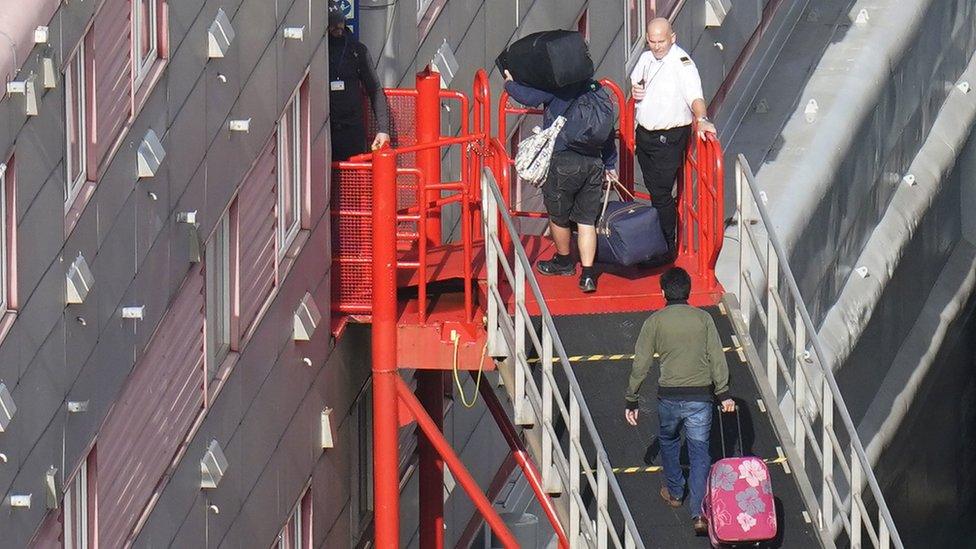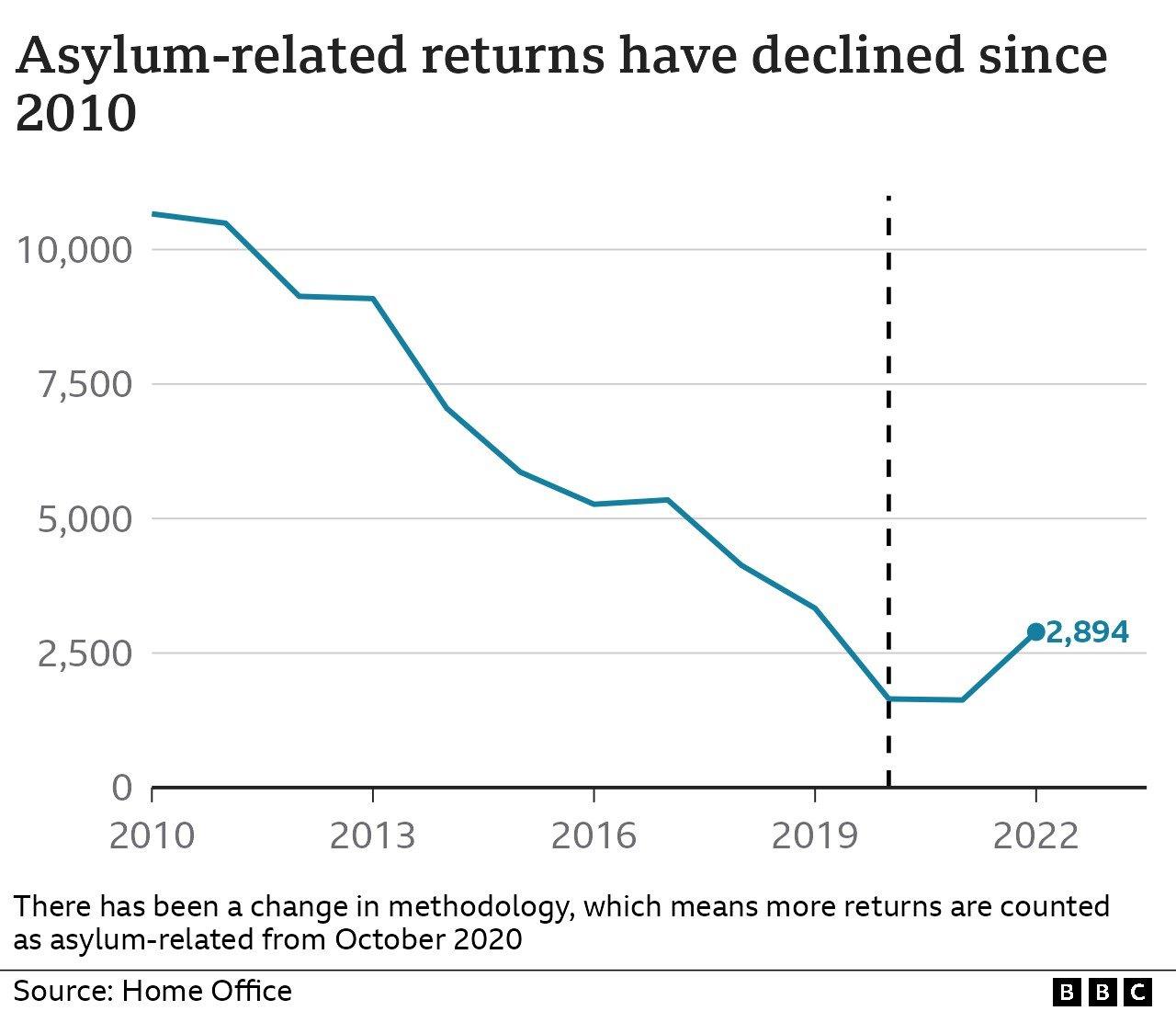Is the asylum backlog going down and other claims checked
- Published

Plans to close 50 hotels to asylum seekers have been announced by Immigration Minister Robert Jenrick.
While defending the government's record on asylum, Mr Jenrick also made several claims during a BBC interview and in the Commons.
Is the asylum backlog coming down?
Mr Jenrick told BBC Breakfast: "the backlog is falling".
The "backlog" refers to the number of asylum seekers waiting for an initial decision on their claim.
The latest published figures, external are for main applicants only - which excludes dependents such as a spouse - and cover up to the end of August.
Since the start of the year the total figure has been relatively static - at just under 140,000.
But it has not fallen. August's figure was up fractionally from the previous month and up about 23% from August 2022.
The government divides the backlog into claims made before and after 28 June 2022, referring to those before that date as the legacy backlog. While the legacy backlog has been falling, the number of applications awaiting decisions since then has been rising.

We asked the Home Office about Mr Jenrick's claim. A spokesperson told us: "The asylum backlog of legacy cases had fallen by over 35,000 cases, between the end of November 2022 and the end of August 2023."
That is true, but Mr Jenrick did not specify that he was talking about the legacy backlog and over the same period the overall backlog has risen by more than 5,000.
Are more failed asylum seekers being removed?
Mr Jenrick also said on BBC Breakfast: "The number of people being removed from the country has risen by 75% in the last year".
He made a similar claim in the Commons on Tuesday, when he told MPs that "removals of those with no right to be in the UK have increased by more than 75% compared to last year".
The Home Office describes these removals as "asylum-related returns" - a group that includes people who have had an asylum claim withdrawn or refused.
Last year there were 2,894 asylum-related returns, external. This is a 78% increase compared with 2021, when 1,627 people were returned.

This rise was in turn driven by a 176% increase in voluntary returns of Albanians who had previously claimed asylum.
But while annual returns are up compared with 2021, when returns were likely to be lower because of Covid restrictions, they are significantly down compared with previous years.
Can people claim asylum in multiple locations in Europe?
Speaking in the House of Commons, Mr Jenrick objected to another MP saying the UK has "taken fewer asylum seekers per head than most other European countries".
Mr Jenrick said the statistics were hard to compare, because "in countries elsewhere in Europe people claim in multiple locations while they are transiting through them".
Peter Walsh from the Migration Observatory at University of Oxford told BBC Verify he was not aware of data that backed up this claim.
But he said there had been some examples such as Hungary, where people applied for asylum but did not receive decisions and so moved on to claim in Germany.
Rather than looking at asylum applications, Mr Walsh added it would be better to look at the number of people granted refugee status per 100,000 of the population.
On that measure, external, Migration Observatory calculations based on data from the European statistics agency Eurostat for 2022 puts the UK eighteenth out of the 32 European countries included.
We have asked the Home Office for evidence to support the minister's claim.

